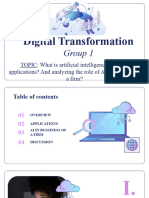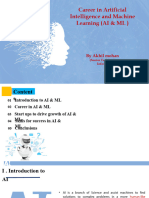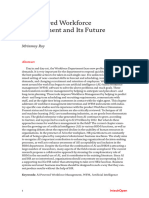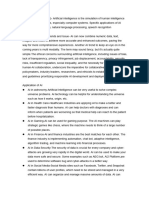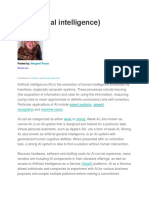0% found this document useful (0 votes)
14 views10 pagesAI and ML
The document provides an overview of Artificial Intelligence (AI) and Machine Learning (ML), detailing their definitions, applications in various sectors such as HR, SCM, and marketing, and the differences between supervised and unsupervised learning. It also discusses the potential of AI, the current state of technology, and the implications of automation on the workforce. Additionally, it covers concepts like reinforcement learning, deep learning, and feature extraction, along with practical applications and tools used in these fields.
Uploaded by
sai charanCopyright
© © All Rights Reserved
We take content rights seriously. If you suspect this is your content, claim it here.
Available Formats
Download as DOCX, PDF, TXT or read online on Scribd
0% found this document useful (0 votes)
14 views10 pagesAI and ML
The document provides an overview of Artificial Intelligence (AI) and Machine Learning (ML), detailing their definitions, applications in various sectors such as HR, SCM, and marketing, and the differences between supervised and unsupervised learning. It also discusses the potential of AI, the current state of technology, and the implications of automation on the workforce. Additionally, it covers concepts like reinforcement learning, deep learning, and feature extraction, along with practical applications and tools used in these fields.
Uploaded by
sai charanCopyright
© © All Rights Reserved
We take content rights seriously. If you suspect this is your content, claim it here.
Available Formats
Download as DOCX, PDF, TXT or read online on Scribd
/ 10








